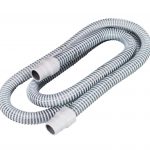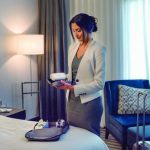CPAP 101: CPAP Masks
Posted by Remologie Staff

For individuals with sleep apnea and associated breathing issues, a CPAP (Continuous Positive Airway Pressure) machine is often necessary. While the machine itself is usually adjustable and similar in design from user to user, the sleeping masks worn to deliver that air pressure can vary significantly. Now that you’ve made the smart choice to safeguard your health and reclaim a restorative night’s sleep, you’ll have three basic styles to choose from: Full Face, Nasal, and Nasal Pillow. Here’s a quick CPAP mask guide to help you find the best fit for your needs:
What is a Full Face CPAP Mask?
A full face CPAP mask is the style that most likely comes to mind when thinking about sleep apnea solutions. The largest of the three mask types, a full face design fits over both the mouth and nose to deliver positive air pressure regardless of the sleeper’s breathing habits (mouth only, nose only, both, etc.) and positioning. It usually has a translucent triangular front piece that is affixed to the face with two straps – one around the forehead, and another closer to the jaw.
There are some full-face masks, such as the ResMed F30, with a more open design that cradles the underside of the nose and covers the mouth.
What is a Nasal CPAP Mask?
A nasal CPAP mask is a smaller, lighter version of the full face style, enclosing only the nose. This leaves the mouth and jaw area open, although the mask is still affixed with a stretchy strap or straps around the user’s head. The nasal mask varies from the nasal pillow mask in that it covers the nose, rather than just the nostrils.
There are also some designs, such as the ResMed N30 mask, that cradle the underside of the nose for a more open feel.
What is a Nasal Pillow CPAP Mask?
A nasal pillow CPAP mask is the lightest and smallest of the three mask types and has a pillow that rests under each nostril, rather than over the nose or mouth. It also relies on a strap to stay in place. This mask type usually gives the wearer the most “open” wearing experience. Some examples of the nasal pillow mask would be the ResMed P10 and ResMed P30i.
Which is the Best CPAP Mask Style?
Though there are three distinct CPAP mask shapes, this variety isn’t a simple matter of wearer preference – in other words, there isn’t really a “best” style, but rather a style “best for you.” Choosing the right mask is integral to getting the restful night’s sleep you deserve!
Each style is specifically designed for certain wearing conditions and medical needs. The advice and recommendations of your doctor or sleep specialist will be the most important factor, but in general:
- Nasal CPAP Masks are the preferred type of mask, assuming clear nasal passages. Nasal mask users must keep their mouth closed at all times to ensure the proper air pressure is maintained. In some cases, it may be necessary to use additional tools, such as a chin strap, to ensure the mouth stays comfortably closed while sleeping. If the wearer breathes through their mouth habitually while resting, they should not use a nasal mask because it will counteract the beneficial effects of the CPAP machine.
- Full Face CPAP Masks are a good choice for users that cannot breathe well through their nose. This style may also be the best choice for those with seasonal allergies or chronic nasal congestion; because you can breathe through both your mouth and nose, depending on nasal functionality.
- Nasal Pillow CPAP Masks are the smallest and lightest of the three but are best suited to users that don’t need high air pressure or struggle with congestion or allergies. Although the pillow mask may be more comfortable for those on lower pressures, some patients can tolerate this mask regardless of their settings. As with nasal masks, a soft, comfortable chin strap may be needed to achieve the best results while you sleep.
Now that you know all about CPAP mask styles, are you ready to start getting a good night’s rest and feeling energetic? If so, start your journey to better health now by calling 204.786.2727 to book a mask fitting appointment (either in-person or remote).












